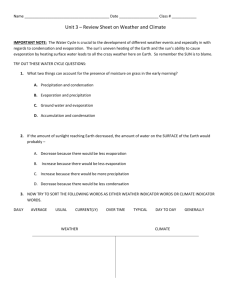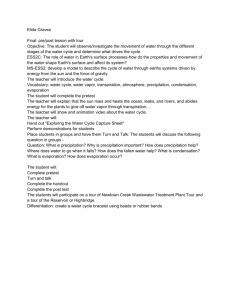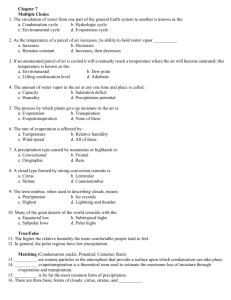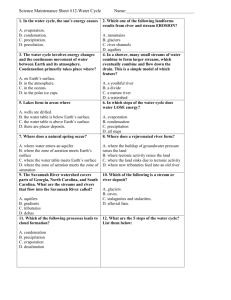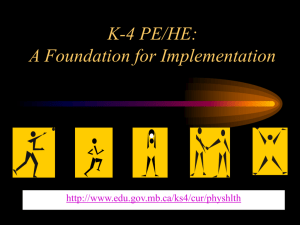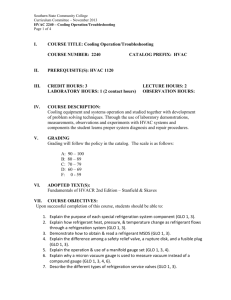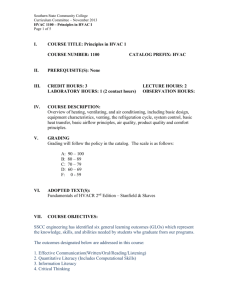Its Raining - Discrepant Event
advertisement
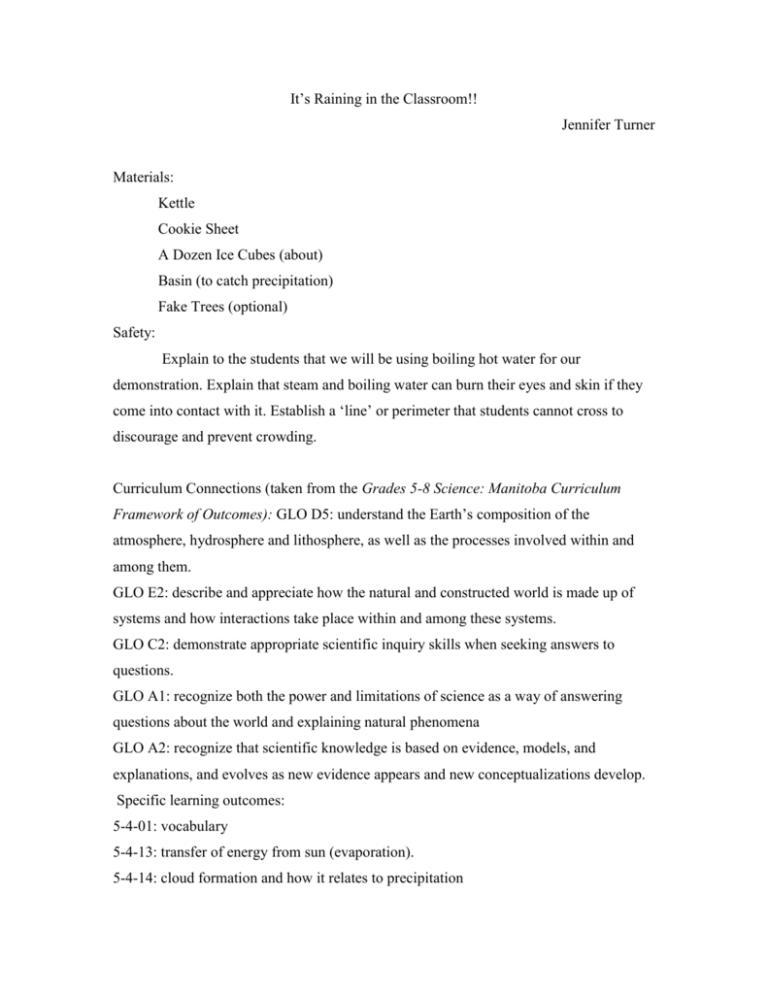
It’s Raining in the Classroom!! Jennifer Turner Materials: Kettle Cookie Sheet A Dozen Ice Cubes (about) Basin (to catch precipitation) Fake Trees (optional) Safety: Explain to the students that we will be using boiling hot water for our demonstration. Explain that steam and boiling water can burn their eyes and skin if they come into contact with it. Establish a ‘line’ or perimeter that students cannot cross to discourage and prevent crowding. Curriculum Connections (taken from the Grades 5-8 Science: Manitoba Curriculum Framework of Outcomes): GLO D5: understand the Earth’s composition of the atmosphere, hydrosphere and lithosphere, as well as the processes involved within and among them. GLO E2: describe and appreciate how the natural and constructed world is made up of systems and how interactions take place within and among these systems. GLO C2: demonstrate appropriate scientific inquiry skills when seeking answers to questions. GLO A1: recognize both the power and limitations of science as a way of answering questions about the world and explaining natural phenomena GLO A2: recognize that scientific knowledge is based on evidence, models, and explanations, and evolves as new evidence appears and new conceptualizations develop. Specific learning outcomes: 5-4-01: vocabulary 5-4-13: transfer of energy from sun (evaporation). 5-4-14: cloud formation and how it relates to precipitation Commentary: Students will have gone over water-cycle diagrams and vocabulary in a previous class. They will already have taken notes as to what; for example, they think precipitation is, what it actually is etc. Students will come into the classroom to a lesson up with the following. A diagram will be on the chalkboard of the water cycle with places to label precipitation, evaporation and condensation. They will review by means of putting up their hands and telling me what word belongs in what space. Beside the board, the apparatus for the demonstration will be set up. There will be a teakettle half full of water and labeled “lake”. Around it there will be fake trees to symbolize land. Explain to students that we are going to make rain/precipitation. Show them that you are going to hold a tray of ice cubes above the teakettle as it boils. What does the cookie sheet represent? Someone should say atmosphere or clouds. Ask students: if this water heats up like the water in a lake what will happen?? (Eventually someone should say evaporation of the water). Ask students what they think will happen when the warm evaporation hits the cold atmosphere? Someone will say ‘condensation’ or ‘clouds’, although it may take some prompting. Ask students what will happen when there is a lot of condensation and the cloud gets ‘heavy’. Students will say that it will rain, but try to get someone to say another word for rain (precipitation). By this time, the water should be boiling and condensation should be building up beneath the cookie sheet. Ass the drops become bigger, they will begin to fall, and it will be raining in the classroom!! Concluding Questions: Ask students to write what they saw in their journals. These descriptions are to be in the own words of the students. (Observation and recall of information. Comprehension and knowledge). Where else does evaporation take place? Make a list, and attach drawings of ideas. (Comprehension and application). Ask students why they think it rains in summer and snows in winter. In the form of a quiz, have students label a diagram of the water cycle. (Recall of information and application.) Ask students to list all four types of precipitation. (Recall of information, comprehension, knowledge). References: Manitoba Education and Youth. (2000). Grade 5-8 Science: Manitoba Curriculum Framework of Outcomes. Winnipeg, Manitoba: Manitoba Education and Youth. www.coun.uvic.ca/learn/program/hndouts/bloom.html. (2005). Blooms Taxonomy.
